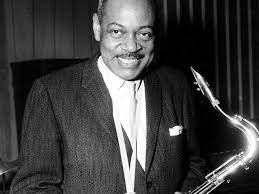Coleman Hawkins, often referred to as the “Father of the Tenor Saxophone,” left an indelible mark on the landscape of jazz music. Here are ten fascinating facts about this influential musician:
- Pioneering the Tenor Sax: Coleman Hawkins was one of the first jazz musicians to adopt the tenor saxophone as a lead instrument in the 1920s. Prior to this, the instrument was primarily used in marching bands and had yet to find its place in jazz ensembles.
- Body and Soul: One of Hawkins’ most famous recordings is his rendition of the jazz standard “Body and Soul,” recorded in 1939. This recording is often hailed as one of the most influential in jazz history and showcases Hawkins’ unparalleled talent and emotional depth.
- European Influence: Hawkins spent a significant portion of his career touring in Europe, where he greatly influenced the development of jazz on the continent. He collaborated with European musicians and absorbed various musical styles, contributing to the globalization of jazz.
- Jam Sessions with Django Reinhardt: While in Europe, Hawkins famously participated in jam sessions with legendary guitarist Django Reinhardt. Their collaborations bridged the gap between American and European jazz traditions and produced some memorable recordings.
- Big Band Era: During the height of the big band era in the 1930s and 1940s, Hawkins played with some of the most renowned orchestras of the time, including those led by Fletcher Henderson and Benny Goodman. His soloing prowess and distinctive sound set him apart in these large ensembles.
- Influential Style: Hawkins’ innovative approach to improvisation and his rich, warm tone set a new standard for tenor saxophone playing. Many saxophonists who followed him, including John Coltrane and Sonny Rollins, cited Hawkins as a major influence on their own styles.
- Experimental Spirit: Hawkins was known for his willingness to experiment with different musical ideas and techniques. He embraced new trends in jazz while staying true to his own distinctive sound, leading to a varied and dynamic body of work.
- Collaborations with Jazz Giants: Throughout his career, Hawkins collaborated with numerous jazz luminaries, including Louis Armstrong, Thelonious Monk, and Duke Ellington. These collaborations not only produced exceptional music but also showcased Hawkins’ versatility as a musician.
- Later Career: Hawkins remained active as a performer and recording artist well into the latter half of the 20th century. He continued to evolve his style, incorporating elements of bebop and other contemporary jazz movements into his playing.
- Legacy: Coleman Hawkins’ legacy looms large in the history of jazz. His contributions to the development of the tenor saxophone as a jazz instrument, his pioneering recordings, and his influence on subsequent generations of musicians ensure that his impact on the genre will be felt for generations to come.


No responses yet